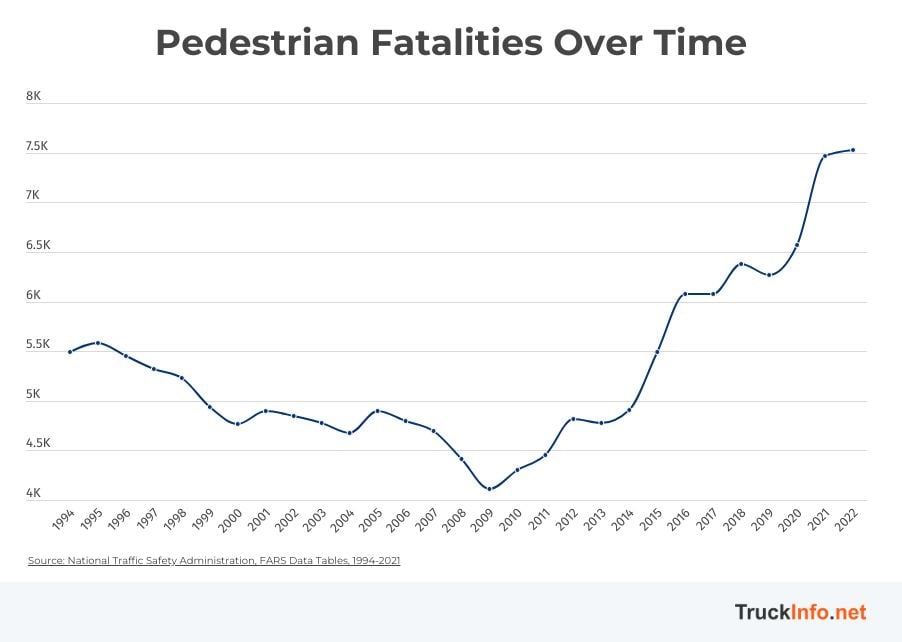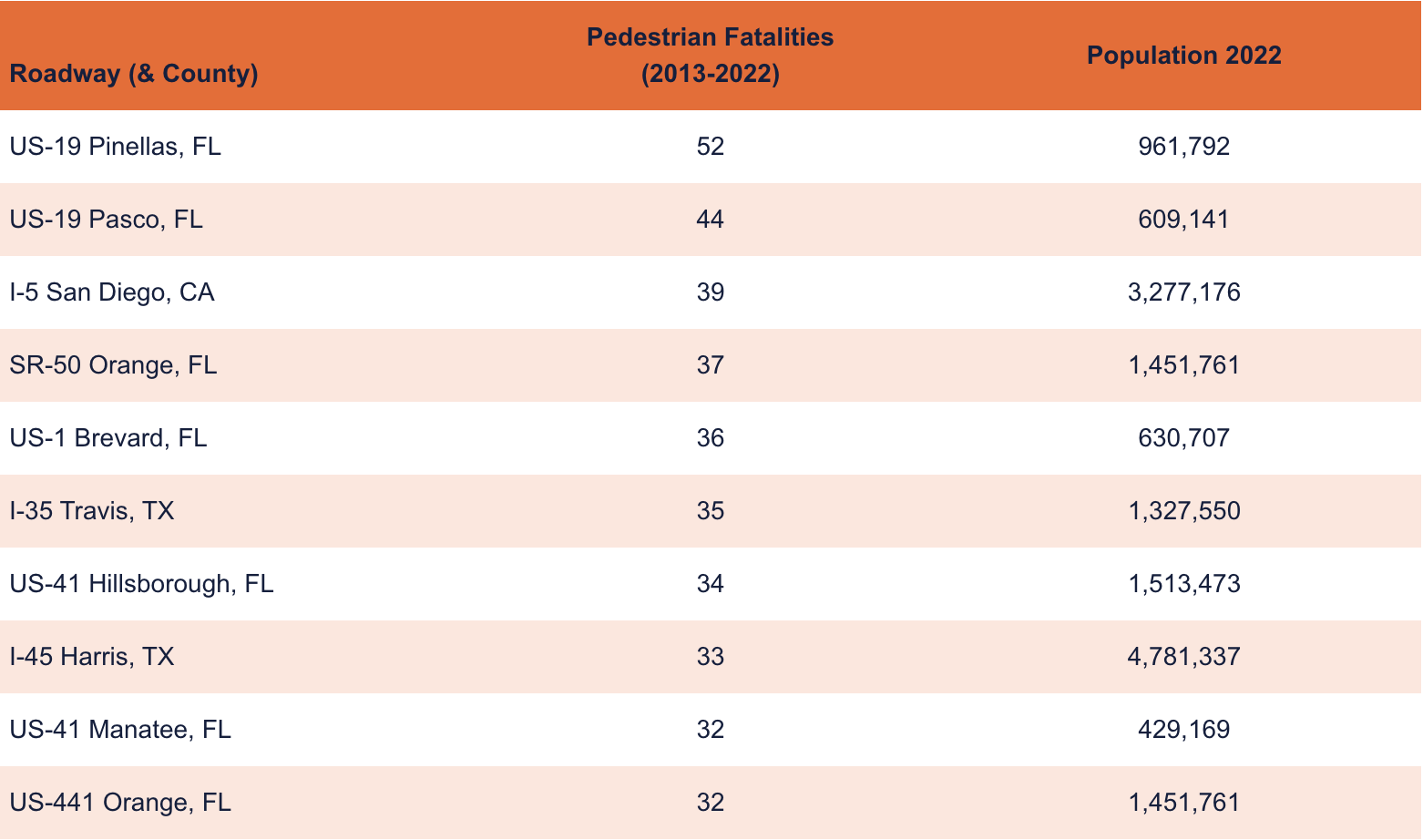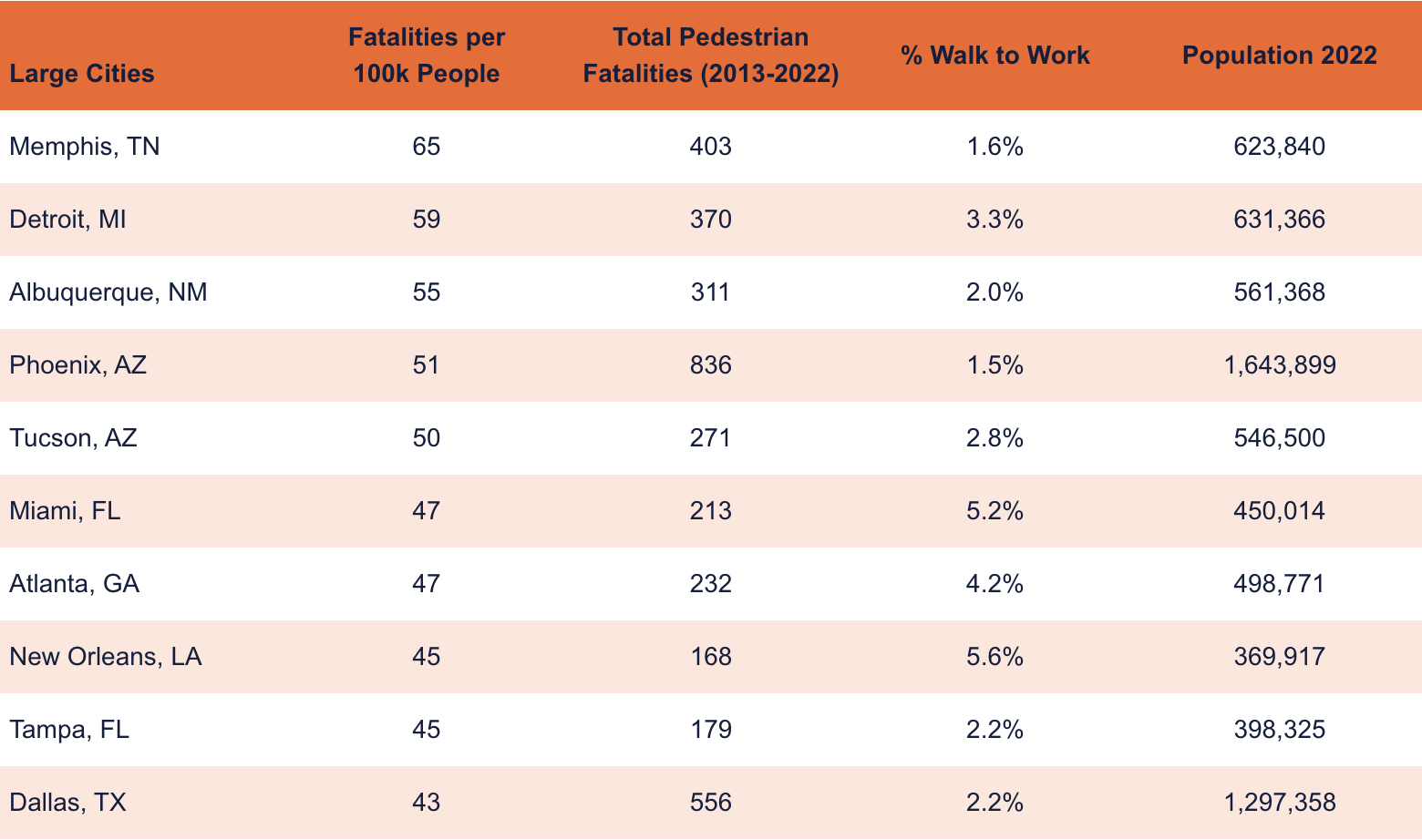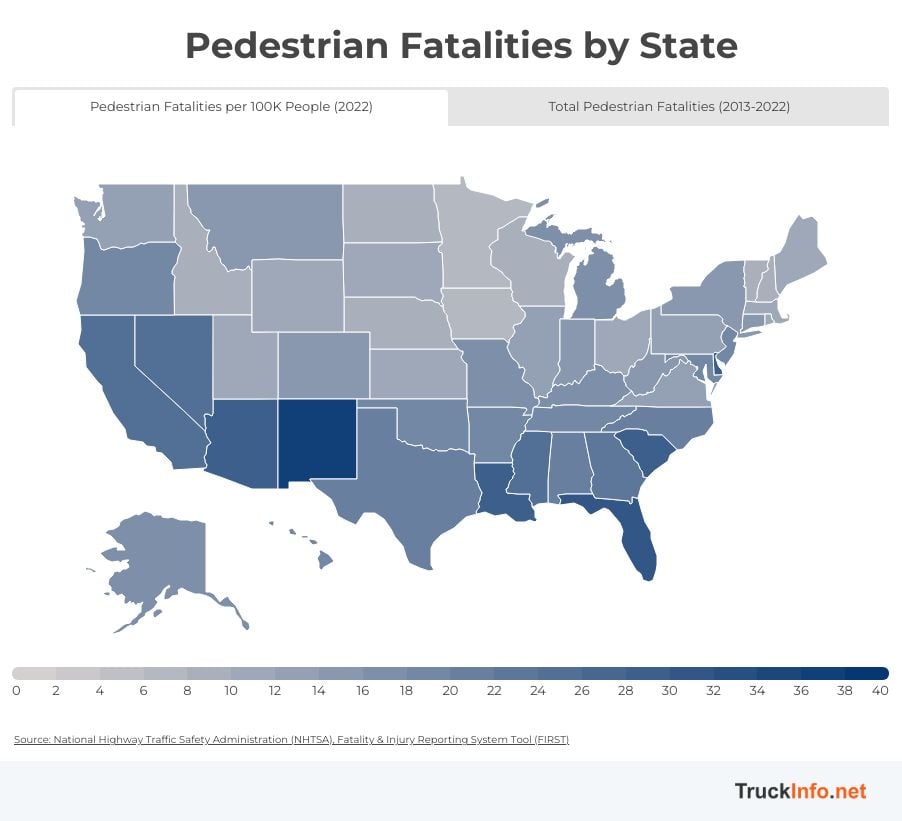Despite the health benefits of walking, only 2.2% of Americans walk to work.
When the federal government tries to promote walking and walking cities, one of the major obstacles they have identified is road safety. Unfortunately, this is a valid concern as pedestrian deaths have almost doubled since 2009.
To determine where pedestrians are at their most risk, researchers at Truckinfo.net analyzed data from the National Highway Traffic Safety Agency and discovered the following trends:

#1: Pedestrian deaths have increased by 80% since 2009
Pedestrian deaths steadily declined between 1995 and 2009, but this trend has reversed, bringing the highest pedestrian deaths to ever.

#2: Cities who go to work have fewer pedestrian deaths per person
It may seem surprising that cities where more individuals are walking to work have fewer pedestrian deaths. However, the most likely explanation is that these cities encourage walking to work by providing safe roads for pedestrians.

#3: The most dangerous roads are not in big cities or counties
Looking at all pedestrian deaths (not per capita), only three of the top 10 most populous counties appear on the top 10 list of the most dangerous roads. In fact, the four most dangerous roads in the country are located in counties with fewer than one million residents.

#4: Memphis, Tennessee is the most dangerous city for pedestrians
Of the metropolitan cities with a population of over 350,000, Memphis, Tennessee is the most dangerous city for pedestrians with 65 pedestrian deaths per 100k.

#5: New Mexico is the most dangerous condition for pedestrians
Florida, Louisiana, South Carolina and Delaware rounded out the top five.
Methodology
Fatal accident statistics were sourced from population data from the National Highway Traffic Safety Administration (NHTSA) and the US Census Bureau. Large cities were defined as cities with a population of over 350,000. A medium-sized city with a population of 150,000 to 350,000. A small city with a population of less than 150,000.
This story was created by Truckinfo.net and was reviewed and distributed by Stacker.

